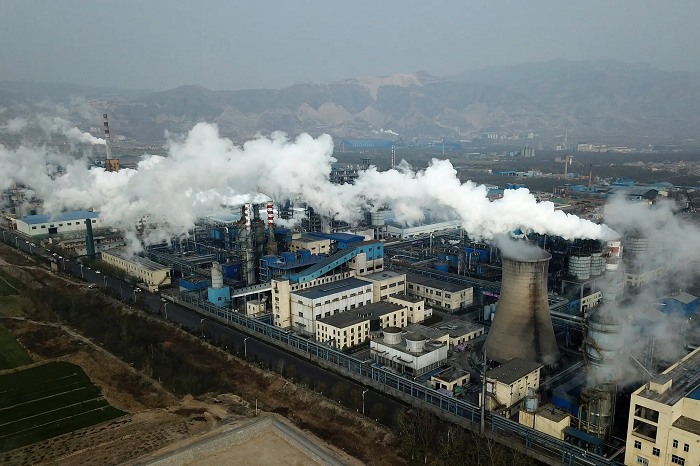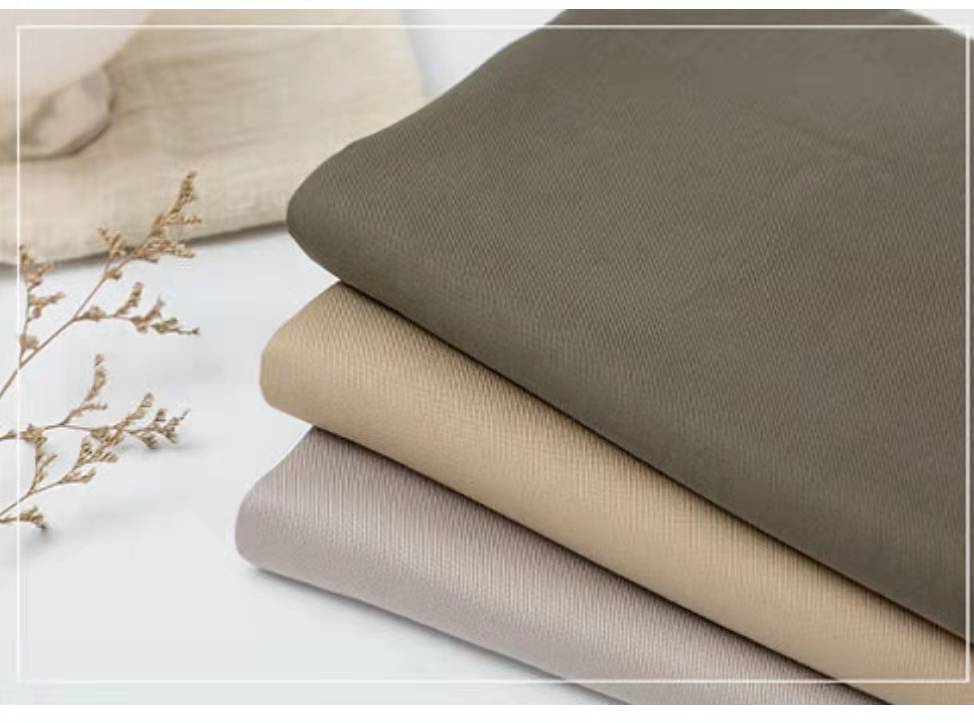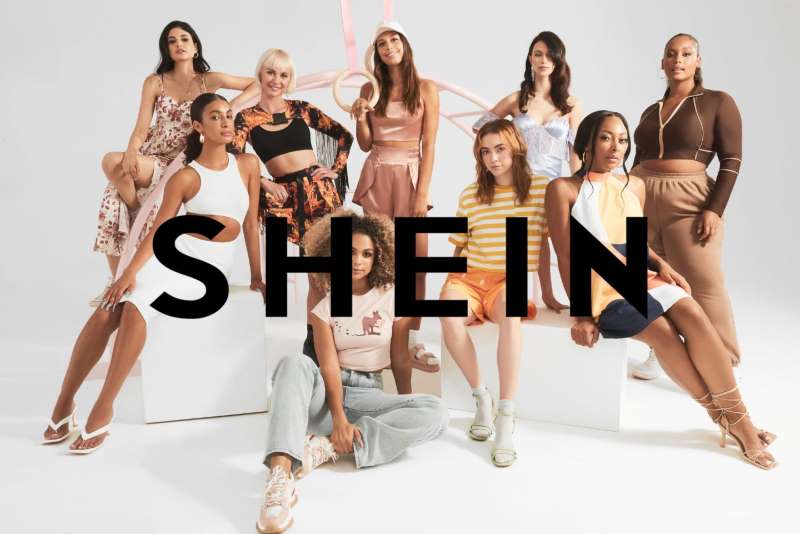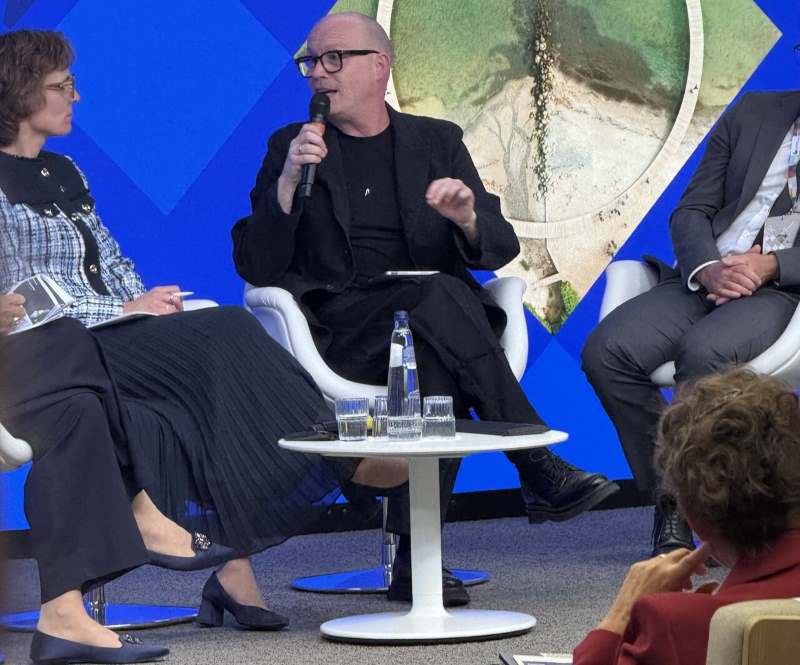FW
Growing at a CAGR of 7.8 per cent from 2021-30, the global yoga clothing market is projected to reach a value of $70,291.0 million by 2030, as per a report by Allied Market Research.
This expansion is largely fueled by a significant increase in obesity rates and health-related ailments worldwide, driving more consumers to embrace fitness practices like yoga.
The market's growth is also propelled by the rising consumer inclination to purchase specialized accessories, including yoga apparel, blocks, and mats. Furthermore, concerted efforts by governments and fitness organizations globally to promote yoga have substantially heightened awareness of its numerous health benefits.
By product type, the bottom wear segment is anticipated to experience the fastest growth, with an estimated CAGR of 8.1 per cent during the forecast period. This growth is linked to the increasing number of yoga practitioners and ongoing R&D investments aimed at enhancing the comfort and functionality of yoga wear.
In terms of end-users, the women's segment dominated the market in 2020, valued at $20,520.7 million and capturing 60.9 per cent of the global share. This dominance is attributed to increased aesthetic awareness among women and the influence of female celebrities promoting yoga.
Regionally, North America remains a prominent market, with the US leading the charge. The US market is projected to reach $5,855.5 million by 2030, growing at a CAGR of 6.4 per cent0. Specialty stores were the leading distribution channel in 2020, accounting for 60.8 per cent of the market, primarily due to their strong presence in developed markets like North America and Europe.
The COVID-19 pandemic spurred increased participation in yoga and home-based fitness activities as people became more health-conscious and utilized online platforms. However, the initial lockdown phases led to manufacturing halts and supply chain disruptions, causing some losses for the yoga clothing industry. Despite these short-term setbacks, the underlying trend of increased health awareness reinforced the long-term growth prospects for the market.
Leading players in the yoga clothing market, including Nike, Puma, Asics, Under Armour, Inc., Adidas, Lululemon Athletica, Manduka, Prana, Hugger Mugger, and Aurorae Yoga, LLC., continue to employ various strategies to expand their market share and capitalize on growth opportunities.
Just ahead of the expiration of a 90-day pause on ‘reciprocal’ tariffs affecting numerous US trade partners, President Donald Trump has entered into a new trade agreement with Vietnam that reduces the import tax levied on goods from the country to 20 per cent from the earlier proposed 46 per cent.
Signed between Donald Trump and Lam, General Secretary, Communist Party of Vietnam, this ‘Great Deal of Cooperation,’ outlines, Vietnam will pay a 20 per cent tariff on all goods shipped to the US and a 40 per cent tariff on any ‘transshipping"’– meaning goods from other countries routed through Vietnam for final shipment to the United States.
Conversely, as part of this new agreement, Vietnam has pledged to grant the US total access to its markets with a zero-tariff rate, allowing American products to be sold there duty-free.
This agreement adjusts the general tariff rate against Vietnamese goods, which had been at 10 per cent during the 90-day pause initiated on April 9. The original ‘reciprocal’ tariff plan included a baseline 10 per cent duty for most trading partners and higher tariffs on specific goods like vehicles and auto parts.
Vietnam stands as the seventh-largest US trading partner, with two-way commerce totaling $149.6 billion in 2024. Last year, US imports from Vietnam reached $136.6 billion, primarily comprising apparel, electrical machinery, and footwear. Top US exports to Vietnam include raw cotton, integrated circuits, and telecommunications equipment.
The Central Government plans a develop a PM-MITRA park in Virudhnagar, Tamil Nadu with an investment of Rs 1,900 crore, To be developed on 1,052-acre, this facility will serve as a world-class hub for technical textiles and integrated manufacturing, says A Saktivel, Vice Chairman, AEPC.
. Featuring a 15 million litres per day Zero Liquid Discharge Common Effluent Treatment Plant, this comprehensive park will provide accommodation facilities for 10,000 workers, and over 1.3 million sq ft of ready-to-use infrastructure.
Expected to attract investments worth Rs 10,000 crore, this facility will also create employment opportunities for more than one lakh people by 2026.
The park will help enhance, Tamil Nadu's competitive position in value-added, sustainable, and export-oriented apparel manufacturing. AEPC will provide plug-and-play manufacturing facilties in these parks in collaboration with both Central and State government authorities.
The project is a result of the state government's ongoing engagement and sustained efforts for Tamil Nadu's textile industry, states Sakthivel.
The recently concluded Global Sourcing Expo Australia (June 17-19) in Sydney served as a vibrant testament to a significant shift in Australia's global sourcing strategy. As the nation's only dedicated sourcing exhibition for apparel, footwear, textiles, and homewares, the event highlighted a growing pivot towards diversified, resilient, and ethically conscious supply chains, with India emerging as a key partner. This transformation is largely driven by the India-Australia Economic Cooperation and Trade Agreement (ECTA) and Australia's increasing demand for sustainable products.
The shifting sands of sourcing
Australia, a nation with high fashion consumption is grappling with the environmental impact of its textile waste.This challenge has spurred a pronounced consumer demand for sustainable and ethically produced goods. Simultaneously, global trade disruptions and the strategic imperative to diversify away from over-reliance on single markets (often termed "China Plus One" strategies) are reshaping Australia's import landscape.
This evolving demand creates a fertile ground for countries like India, which boasts a robust textile and apparel sector contributing 12% to its total exports. India's industry is increasingly focusing on eco-friendly materials and ethical practices, aligning perfectly with Australia's burgeoning sustainability preferences.
ECTA: The game changer for India's exports
The India-Australia Economic Cooperation and Trade Agreement (ECTA), effective since December 29, 2022, has been a pivotal force in this reorientation. By eliminating tariffs on nearly 96% of Indian textile and apparel exports to Australia (set to reach 100% by January 1, 2026) , ECTA has leveled the playing field. Previously, Indian textile exporters faced duties of up to 5%. This duty-free access provides a significant competitive edge over traditional suppliers like China, Bangladesh, and Vietnam. The impact is already evident in trade figures:
India's Apparel Exports to Australia (Value in USD Million)
|
Year |
Knitted Garments (USD Mn) |
Woven Garments (USD Mn) |
Total (USD Mn) |
Growth % |
|
2019-2020 |
87.38 |
127.91 |
215.29 |
– |
|
2020-2021 |
93.12 |
111.8 |
204.92 |
-4.81 |
|
2021-2022 |
123.96 |
152.06 |
276.02 |
34.68 |
|
2022-2023 |
131.93 |
170.75 |
302.68 |
9.65 |
|
2023-2024 |
138.25 |
182.79 |
321.04 |
6.07 |
This data shows consistent growth, particularly the 34.68% surge in 2021-2022 (pre-ECTA anticipation) and sustained growth post-implementation. While China still dominates Australia's textile and clothing imports with a 57.86% share, India's 6.11% share in 2022 indicates substantial room for expansion, especially with the new tariff advantages.
The Global Sourcing Expo: Bridging continents
The Global Sourcing Expo, which just wrapped up, served as a critical platform for Indian exporters to capitalize on these opportunities. Leading organizations actively participated, showcasing India's strengths and its commitment to sustainable practices. Such events facilitate direct engagement between Indian suppliers and Australian buyers, fostering new partnerships and providing invaluable market insights.
Evolving business models and success stories
Indian exporters are adapting their business models to meet Australian market demands. Beyond traditional B2B wholesale, there's a growing emphasis on direct-to-consumer (D2C) and e-commerce channels, leveraging Australia's booming online retail market, where fashion and apparel e-commerce holds a 17.4% share.
The Rise of Sustainable Textiles A notable outcome of ECTA has been the "enhanced interest from Australian retailers in Indian sustainable textiles". This reflects a growing alignment between India's production capabilities in organic and cotton textiles and Australia's consumer demand for ethical sourcing.
Artisanal and Handicraft Appeal The Australian market also shows strong appreciation for Indian textiles and clothing "because they are well-made and have unique patterns". The sizable Indian diaspora in Australia further fuels demand for authentic Indian products, including traditional apparel like kurtas and lehengas.
Navigating challenges, seizing the future
Despite the promising outlook, challenges persist, including intense competition from established players and logistical complexities within India. However, the ongoing negotiations for a Comprehensive Economic Cooperation Agreement (CECA) signal a long-term commitment to deepening bilateral economic ties, promising further trade liberalization and sectoral expansion.
The Indian government aims to triple its overall textile exports to approximately US$108 billion by 2030 , with a specific target to increase textile and apparel exports to Australia from USD 392 million to USD 1100 million over the next three years. This ambitious vision, coupled with Australia's evolving sourcing needs, paints a promising picture for a stronger, more diversified, and sustainable textile trade relationship between the two nations.
Upcoming Free Trade Agreements (FTAs) with the United States, the United Kingdom, and the European Union are expected to unlock significant growth opportunities for India's textile sector with exports rising to $100 billion by 2030 from the current $34 billion, said Pabitra Margherita, Union Minister of State for Textiles at the 73rd India International Garment Fair (IIGF) at Yashobhoomi.
Margherita underscored the strategic importance of these FTAs, stating that negotiations with the EU and the US, along with the India-UK FTA, will open new avenues for growth. She emphasized, these are ‘high-value, quality-conscious markets,’ and India is committed to equipping its exporters with the necessary strategies, standards, and compliance to capitalize on these opportunities.
The textile and apparel industry plays a crucial role in the Indian economy, contributing 2.3 per cent to the GDP, 13 per cent to industrial output, and 12 per cent to national exports. In FY23-24, India's textile exports reached $34.4 billion, with apparel accounting for a significant 42 per cent of that total. Margherita emphasized, achieving the $100 billion export target by 2030 will require the active participation of every MSME, entrepreneur, and exporter.
The ongoing three-day IIGF, organized by the Apparel Export Promotion Council (AEPC), features over 360 exhibitors from across India and buyers from 80 countries. Margherita lauded the event as Asia's largest garment fair, showcasing India's rich creativity and craftsmanship. Buyers from diverse regions including North America, Europe, Asia, and Africa are attending.
Given that over 80 per cent of India's textile sector is driven by MSMEs, Margherita emphasized on the need to boost productivity, ensure consistent raw material supply, and minimize import dependency to maintain global competitiveness. Sudhir Sekhri, Chairman, AEPC added, the fair serves as a vital platform for promoting 'Made in India' fashion globally. He projected India's garment exports to reach $40 billion by 2030, noting a commendable 12.8 per cent cumulative growth in apparel exports during the first two months of FY2025-26, despite global challenges
H&M is expanding its exploration of generative AI by releasing its first series of images featuring digital twins. Set against the backdrop of global fashion capitals, these images showcase seasonal denim that also embodies a timeless appeal.
Co-created with a dedicated team and complemented by a behind-the-scenes film, H&M aims to demonstrate how generative AI can amplify creative processes and elevate fashion storytelling.
The brand is exploring emerging technologies like generative AI to amplify creativity and reimagine how it showcases fashion, says Jörgen Andersson, CEO, H&M. The technology offers the brand an opportunity to enhance storytelling and find new ways to connect with their customers, while staying true to H&M’s style-led, human-centric identity. The brand remains committed to empowering self-expression and liberate fashion for the many."
This initial launch went live on July 2, and H&M plans to continue its exploration throughout the fall with various expressions across different cities.
UK's premier marketplace for home, gift, and fashion, Autumn Fair 2025 has unveiled its most ambitious and retailer-focused content program yet. Designed with the needs of independent retailers in mind, this practical and easy-to-consume agenda aims to deliver maximum value efficiently, allowing buyers to prioritize their sourcing.
Being held at the NEC Birmingham from September 7-10, 2025, this year's event directly addresses the challenges faced by independent retailers, including rising costs, evolving customer behaviors, and the demands of digital transformation. The response is a powerful new program featuring over 30 short, high-impact sessions.
Presented across the new Retail Corner stage and Buyers Retreat, the agenda is packed with real-world strategies, future-facing trend intelligence, and expert-led workshops. These sessions are tailored to help home, gift, and fashion retailers buy smarter, sell better, and future-proof their businesses, all while staying connected to the broader retail industry.
The content focuses on profit-driving insight, trend intelligence, and practical transformation, curated specifically for the realities of independent retail. Topics range from social commerce and sustainability to licensing, merchandising, and consumer psychology, offering a holistic view of the retail landscape and how to stay ahead. The organizers describe this year's lineup as a masterclass in next-generation retail.
Soraya Gadelrab, Event Director, Autumn Fair, emphasizes, Autumn Fair 2025 introduces a powerful new content agenda that’s practical, focused, and easy to consume, designed to fit around your buying and deliver maximum value in minimal time. This is about giving you real-world strategies and actionable insights that can make a genuine difference to your business, she adds.
Leading global fashion and lifestyle retail conglomerate, Apparel Group has officially launched its Summer 2025 campaign, titled, ‘Your Style, Your Story.’ This bold and emotionally resonant initiative celebrates individuality, creativity, and seasonal innovation across all generations.
Thoughtfully designed to connect with every age group, from grandparents to Gen Z and children, the campaign showcases a curated portfolio of iconic brands that cater to diverse styles, lifestyles, and life stages. Whether customers are seeking performance-driven pieces from F5 Global, casual essentials from R&B, comfort-first footwear from Skechers, or the timeless sophistication of Tommy Hilfiger, the Summer 2025 Catalogue promises something unique for everyone.
The heart of the campaign is its Summer 2025 Catalogue, which is being featured across digital platforms, including 6thStreet.com, and within flagship stores. A collection of products; the Catalogue blends editorial-inspired visuals, immersive style edits, and modern-day essentials, reflecting the evolving identity of today's shopper through a seamless mix of inspiration, curation, and accessibility.
Neeraj Teckchandani, CEO, Apparel Group, states, more than just a seasonal launch, the campaign is a strategic reflection of how consumers use fashion to express identity. It offers a retail experience that feels personal, curated, and connected, while celebrating the rich diversity of style across the region.
Based in Dubai, UAE, the Apparel Group boasts a growing network of over 2,300 stores and a diverse portfolio of over 85 international brands across 14 countries, including a strong presence in the GCC, India, Southeast Asia, South Africa, and Egypt. Led by Sima Ganwani Ved and Nilesh Ved, Founders, the Group represents global names like Tommy Hilfiger, Skechers, ALDO, Charles & Keith, and Tim Hortons, driven by a multicultural workforce of over 27,000.
Gartex Texprocess India is launching the ‘Textile Care Forum’ in partnership with the Drycleaners and Launderers Association of India (DLAI)
Set to debut at the upcoming Gartex Texprocess India exhibition from August 21-23, 2025, in New Delhi, this strategic collaboration reflects the evolving landscape of India's textile care industry. DLAI will serve as the Knowledge Partner for the forum, scheduled for August 22, aiming to foster networking and innovation within the sector.
India's laundry and textile care segment is experiencing significant growth, driven by an increasing emphasis on eco-friendly chemicals, waterless cleaning systems, and sustainable operations. Valued at $1.31 billion in 2024, the Indian dry-cleaning services market is projected to reach $2.09 billion by 2033, demonstrating a robust 5.40 CAGR. This partnership strengthens Gartex Texprocess India's offerings by integrating the global expertise of Messe Frankfurt Group's renowned 'Texcare' brand, a leading reference point for the laundry and textile services industry worldwide.
Connecting over 3,000 stakeholders from traditional launderers to commercial laundry chains, DLAI will enhance the forum's focus on professional cleaning as an integral part of the garment and textile ecosystem. The Textile Care Forum will spotlight innovations in cleaning machinery, stain treatment solutions, biodegradable chemicals, and automation, encouraging broader participation from the segment.
Raj Manek, Executive Director & Board Member, Messe Frankfurt Asia Holdings notes, the partnership aligns Texcare's global vision with Gartex Texprocess India.
The forum will enhance the show's offerings and bring a sharper focus to sustainability and hygiene, adds Himani Gulati, Director, MEX Exhibitions,
This alliance will enable DLAI to bring sector-specific insights, experts, workshops, and curated pavilions to the event, promoting industry upskilling and future readiness. Gartex Texprocess India is thus expanding its scope to become a comprehensive hub for India’s textile machinery, denim, screen printing, fabrics, trims, accessories, and now, the vital textile care ecosystem.
Launched at the June Global Fashion Summit: Copenhagen Edition 2025, the Fashion Impact Toolkit is set to become a vital resource for textile companies navigating complex sustainability challenges. This interactive tool offers an impact inventory and a comprehensive framework designed for businesses throughout the entire textile value chain. This includes raw material producers, retailers, recyclers, and remanufacturers, and it's applicable across major sub-sectors like high-street fashion, luxury, footwear, sportswear, and textile manufacturing. It serves as an initial step for companies to map their areas of influence based on factors such as materials, processes, and geographies.
The Fashion Impact Toolkit will be a valuable resource for the textile industry as it navigates increasing regulatory and stakeholder pressure, states Federica Marchionni, CEO, Global Fashion Agenda. By identifying and addressing the most critical sustainability implications across the value chain, companies can foster greater resilience, build trust, and achieve long-term transformation, she adds.
The Toolkit details nearly 3,000 potential impacts, encompassing both challenges and opportunities, to aid leaders in their decision-making. Its foundation involves geographical scoping to pinpoint potential impacts across the main stages of the textile lifecycle. This results in a value chain mapping and impact inventory that highlight key hotspots and pressure points across six distinct stages: production of materials, garment manufacturing, product distribution and use, end-of-life management, material recycling, and high-value recovery activities.
Structured according to the European Financial Reporting Advisory Group’s (EFRAG) European Sustainability Reporting Standards (ESRS), the interactive Toolkit guides organizations through a seven-step framework. This includes identifying their position in the value chain, generating material- and geography-specific insights, translating sector-wide impacts to company-specific ones, quantifying identified potential impacts, defining risks and opportunities, shaping ambition and strategy, and collaborating for systemic change.













